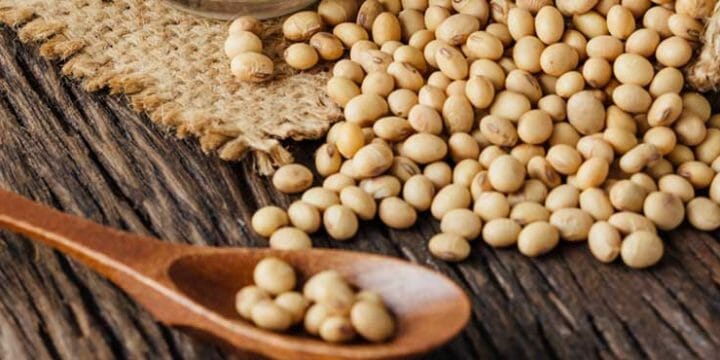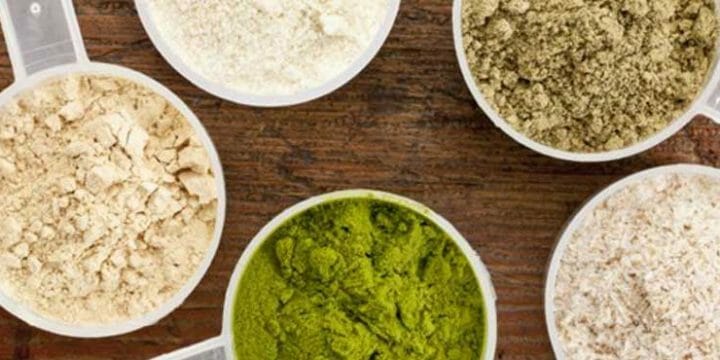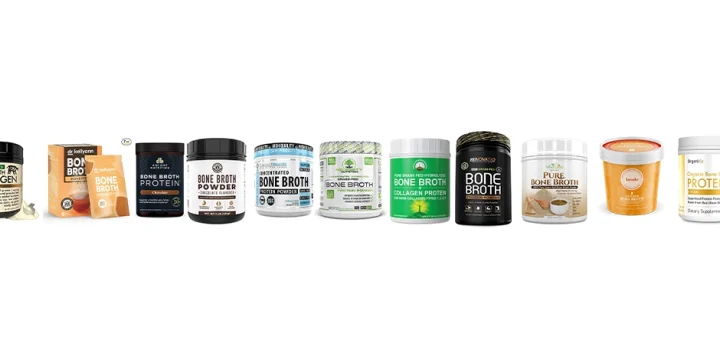Ever found yourself wondering over how much protein you're actually putting in your shake?
As a personal fitness coach, I found it important that you learn how to choose the right protein powder, as well as the optimal amount suitable to your body.
I teamed up with a top dietitian to help you understand the importance of measuring protein precisely.
Does the serving size determine the protein content? Read on and uncover the surprising truth.
Quick Summary
- One scoop of protein powder typically contains about 1.7 tablespoons.
- The protein content in a scoop can vary widely, with some reaching up to 90% protein.
- Whey protein isolates often provide approximately 22.5 grams of pure protein per 25-gram scoop.
- Personally, I find that weighing protein powder is the most reliable method for ensuring accurate dosage.
What Size Is a Scoop of Protein Powder in Tablespoons?
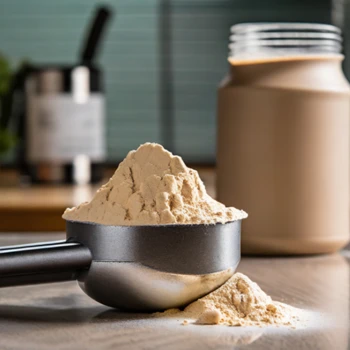
A typical scoop of protein is about 25 grams, which is equivalent to 1.7 tablespoons of protein powder.
How does one precisely quantify the content within a protein scoop, you ask? It's a question I’ve delved into, armed with scales and nutritional insights.
Let’s take a look.
Based on generally accepted measurements, one tablespoon is just under 15 grams [1]. That means that one scoop of 25 grams of protein powder is about 1.7 tablespoons.
However, you’ll find that protein shakes have a wide range of protein scoop sizes, which is partially down to the target audience and the source of protein.
For example, on the nutrition facts label of whey protein containers for performance athletes, you’ll typically find anywhere from 23 to 30 grams per scoop of whey protein powder.
At the same time, a plant-based protein scoop is often just under 20 grams.
These are values that I have gathered from researching dozens of different products for this website.
And the important thing to understand is that you also need to look at the exact protein content per scoop.
Let me explain.
How Much Protein Does Each Scoop Contain?
In my hands-on experience, I’ve discerned that the protein content in each scoop can vary widely, ranging from 30% to a staggering 90%, a diversity attributed to the type and intricate processing methods involved. For example, whey concentrate can be as low as 30% raw protein, while isolate is typically 90%, according to the MedicalNewsToday [2].
“The percentage of protein in WPC [whey protein concentrate] depends on how concentrated it is. Lower end concentrates tend to have 30 percent protein and higher end up to 90 percent.”
- Natalie Olsen, R.D., L.D., ACSM EP-C, medicalnewstoday.com
From my observations, a standard scoop of whey-based protein weighs in at 25 grams, translating to approximately 22.5 grams of unadulterated protein in the case of isolates.
That’s important to understand for performance athletes with strict macro diet guidelines.
As you measure your protein powder, you might also be curious about how it fits into different dietary plans. Protein powders are versatile and can be a crucial component in vegan, keto, and other popular diets, helping individuals meet their specific nutritional needs.
And if you need a specific amount recommended by a dietitian, then you might need to take more or less than one scoop size. That’s where measuring in tablespoons can become convenient.
But there is a better option.
Is It Better to Weigh Protein Powder?
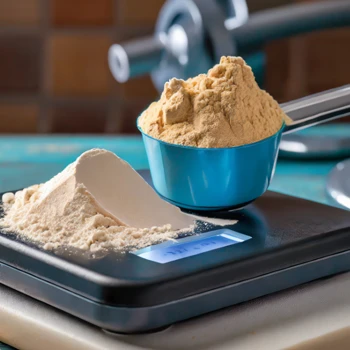
Indeed, in my practice, I’ve found that weighing protein powder ensures unparalleled precision, guaranteeing that each serving aligns with your specific nutritional targets.
Let’s say that your dietitian recommends that you have a whey protein shake with 15 grams in the morning and with 30 grams after your workout.
Given that a standard protein scoop holds 23 grams, calculating the exact quantity in scoops or tablespoons can pose a challenge, a nuance I’ve encountered in my own nutritional planning.
Here’s what I do.
Each morning, the precision of kitchen scales aids me in concocting my protein smoothie to perfection. A similar meticulousness ensures I have the precise quantity needed for my post-workout replenishment, pre-measured and ready in my shaker.
It’s then ready to mix with water in the afternoon once I complete my workout.
Ultimately, that kind of approach gives you a lot more control over your macros for building muscle and losing fat, and you don’t have to calculate how many tablespoons you might need to add.
How to Compare Different Protein Products?

I mentioned above that pretty much every brand will have a slightly different size scoop of protein powder.
In my experience, a meticulous examination of the label’s finer details is instrumental in discerning how a product aligns with your individual nutritional and fitness objectives.
Serving Size vs. Protein Content
A pet peeve of mine, rooted in years of navigating the protein supplement landscape, is the tendency of certain whey protein brands to highlight the total grams of the powder, overshadowing the actual protein content per scoop.
For example, you might see big, bold writing on the front that a product contains 25 grams of protein powder per serving.
But if this is whey protein concentrate, then you might only be getting 15 grams of pure protein.
So, always check the label for details about what each protein scoop contains.
If you need some further advice on choosing the highest-quality protein powders, then we have some dedicated guides you should check out:
Personalized Servings per Container
You also need to calculate how many scoops of protein powder you personally need per day.
My personalized regimen, honed over years of experimentation, involves integrating 20 grams of protein in my invigorating morning smoothie and an additional 30 grams post-workout for optimal recovery.
That’s a total of 50 grams on a typical day. In that case, buying 10-ounce containers (about 300 grams) won’t get me very far.
So, always work out your personal needs and then aim to buy larger containers.
While we're on the topic of protein powder measurements, it's also essential to consider the environmental impact of protein powder production. The process involves various resources, leading to a significant environmental footprint, including water usage, emissions, and waste production.
You can check our recommended protein powders on the market here:
FAQs
Is There a Standard Protein Powder Scoop Size?
No, there is no standard protein powder scoop size. Each product has different grams of protein powder per serving, but most of them range from 20-25 grams per scoop.
Can You Use the Scoop From a Different Protein Powder?
Yes, you can use the scoop from a different protein powder. However, this is quite likely going to give you a different number of grams of protein powder, but it can be a convenient trick to get an exact dose that’s different from the scoop in the packaging.
References:
- https://www.bakinglikeachef.com/how-many-grams-is-in-a-tablespoon/
- https://www.medicalnewstoday.com/articles/263371#types
About The Author
You May Also Like



